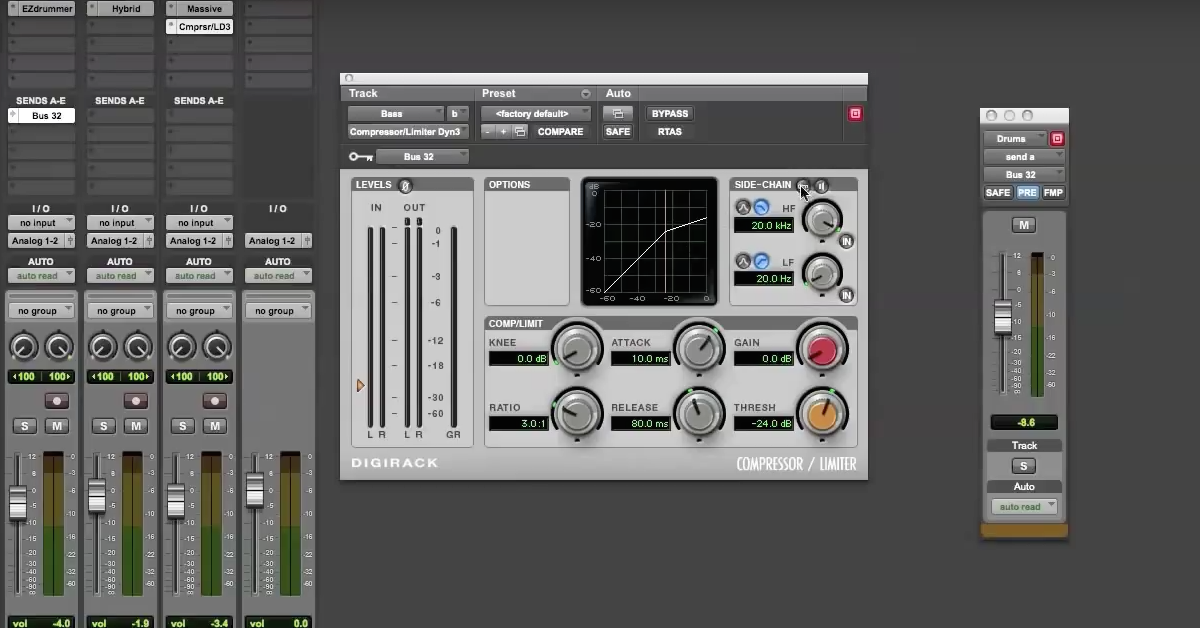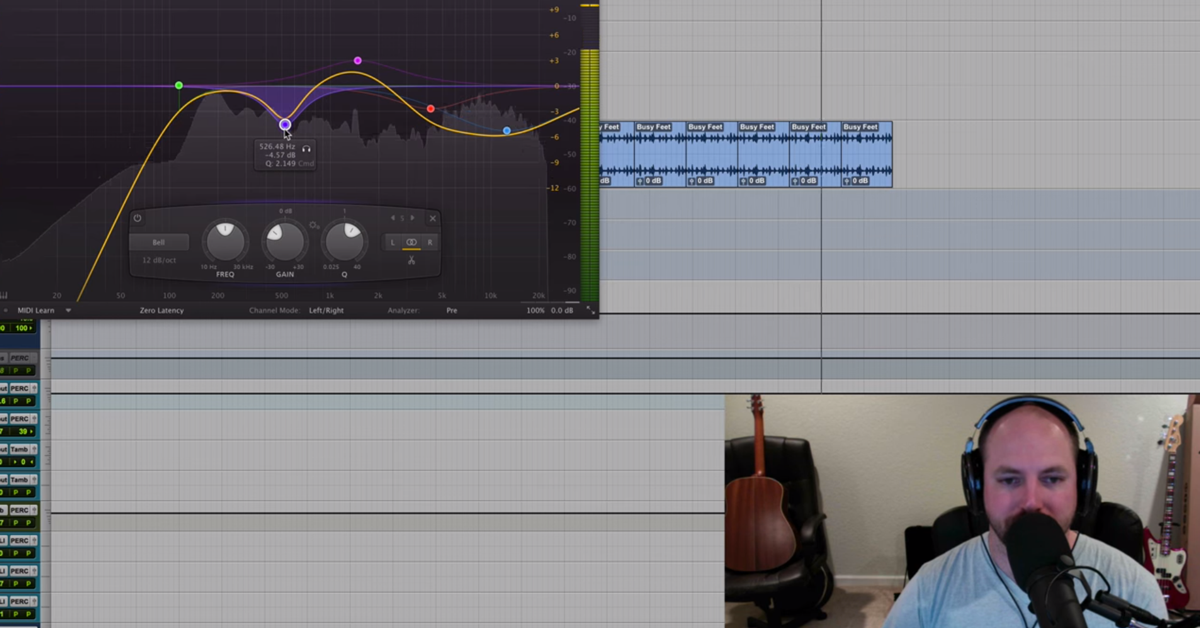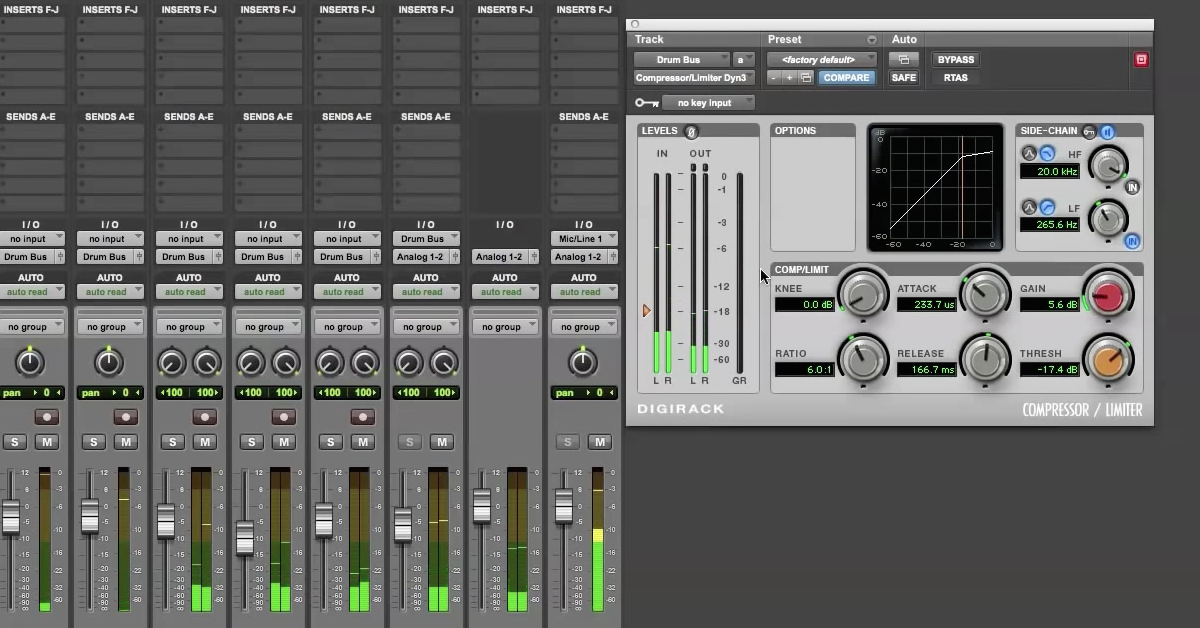9 Compression Mistakes You Don’t Know You’re Making
Article Content
Grammy-winning mixer Bruce Swedien has a famous saying…
“Compression is for kids.”
Pssht.
The truth? Compression is crucial. And if you want to craft a modern-sounding mix, you’re gonna have to use it.
But conquering compression is tricky. There are hundreds of plugins to choose from, a plethora of parameters to tweak, and dozens of things you can do with it.
With so many options, it’s easy to get overwhelmed. And it’s even easier to make mistakes—which can turn any mix into a flat, lifeless pancake.
Yikes.
Avoid these nine pitfalls, however, and you’ll have nothing to worry about. Before long, you’ll be compressing like a pro.
1. You’re Stuck in the Past
If I see another shootout comparing a dozen 1176 plugins, I might retire.
The 1176 was released 50 years ago.

Are you stuck in the past?
Sure, it was great for its time. But are there no better tools available today?
Has no one improved upon this design over the last 50 years?
No other industry romanticizes the past to such a great degree. Publishers don’t do shootouts to find the best version of the Guttenberg printing press. Sure, it was great for its time. But today, we have the internet.
If you’re trying to find the best replica of an ancient compressor, you’re barking up the wrong tree. Many modern compressors blow the classics out of the water. They’re more versatile and sound better.
Are you looking for them?
2. Your Attack Time Is Too Fast
Fast attack times are seductive.
They cause compressors to clamp down quickly, which can make tracks sit evenly in a mix with minimal fuss. For this reason, many mixers dial in fast attack times by default.
So what’s the problem?
Fast attack times destroy transients.
These are the short bursts of sound at the beginning of notes—the bright pluck of a pick hitting a string, the thwack of a drumstick on a snare, the consonants in a vocal performance. Transients add energy and life to music. Removing them can make a mix sound flat and unexciting.
This is likely why Bruce Swedien avoids compression altogether. To him, the risk of sacrificing the transients isn’t worth the benefits.
But there’s no need to throw the baby out with the bathwater. Instead of avoiding compression, just slow the attack time down. This will cause the compressor to let the transients pass through unharmed.
The result?
You’ll get all the benefits of compression, while retaining the punch and impact that makes music compelling.
3. You Compress without Context
When you’re tweaking a compressor, it can be hard to hear subtle changes.
To hone in on difficult decisions, many mixers solo the track they’re working on.
This makes changes easier to hear. Without the distraction of other tracks, you can be more discerning. The right choices seem more obvious.
So what’s the problem?
The solo button removes the context you need to make good mixing decisions.
In solo, you’ll be guided towards choices that make tracks sound better on their own. But these decisions often don’t hold up in context. At best, they’ll need additional tweaking. At worst, they’ll lead you down the wrong path.
For example, tracks often need a lot more compression than you’d ever apply in solo. Excessive soloing can lead to under-compression, which can make tracks sound shaky and unstable in a mix.
It doesn’t matter how a track sounds in solo. All that matters is how it fits within the rest of your mix.
Avoid the solo button while compressing. Force yourself to make decisions in context, with the rest of the tracks playing. This can be difficult at first, but it will lead to better compression decisions.
4. You Put It on Everything
I like ketchup. In fact, I like it a lot.

Compression is not ketchup.
But some people love ketchup. And their passion for ketchup extends beyond burgers and fries.
They put it on everything. Eggs, bacon, onion rings…
Compression is not ketchup. Put in on every track, and you’ll end up with a small, lifeless mix.
The secret?
Always have a reason for using it. And don’t be afraid to leave things alone. Many tracks—including distorted guitars, drum samples, and virtual instruments—will sound fine without it.
If it ain’t broke, don’t fix it.
5. You Monitor Too Loud
When you crank the speakers, it’s easy to hear everything. Tracks sound clear and impactful. And you feel like a pro.
Turn the speakers down, however, and a lot of that detail will disappear. When the singer dips into her lower register, she’ll get drowned out. That dynamic guitar part will sound shaky and inconsistent. And suddenly, you don’t feel like a pro.
But you end up working a lot harder. And compressing a lot more.
This is a good thing. It will lead to a mix that sounds great at any volume.
Force yourself to mix at lower levels, and your mixes will improve.
6. You Use It as a Crutch
Rely on compression exclusively, and you’ll continually come up short. You may not have to move any faders, but your tracks will often end up sounding flat and lifeless.
The trick?
Get 80 to 90 percent of the way there with compression. Tracks should sit evenly without moving any faders. Then, flip on the automation and bring it home. Ride up the words and phrases that get lost. Bring up any details that the compressor missed.
Even the best compressor won’t replace a fader. They’re both essential. Use them together.
7. You Use Multiband Like It’s Going out of Style
Mastering engineer John Scrip has a nickname for multiband compression.
He calls it maul-the-band compression.
While many mixers use multiband compression liberally, I find it works best as a problem-solving tool. I avoid it unless necessary, because it’s got some serious downsides.
Splitting a track into multiple bands and processing them independently can create artifacts and phase problems. And in most cases, single-band compression will do the job just fine.
My advice? Try single-band first. And if you’re using a multiband compressor, have a reason for it. More knobs don’t mean better results.
8. You Apply It All at Once
Ever hire a painter? The best painters apply several coats.

Compression is like painting. For best results, apply several coats.
First, they cover the walls with primer. Then, they add a few coats of paint. And finally, they touch up any areas they missed.
Compression works in the same way. For best results, apply it in stages.
Many mixers try to do too much at the end of the line. If they want a louder mix, they add more compression and limiting to the mix bus.
The result?
A wimpy, distorted record.
Instead, compress in stages. Shave a few dB off tracks. Take a few more off your group busses. And finish it off with some gentle mix bus compression.
This approach will yield more musical results. And the kicker? You’ll often be able to achieve louder levels without distortion.
9. You Don’t Level-Match
Most compressors have a control called makeup gain, which allows you to turn the track up after it’s been compressed.
This control can be dangerous. Add too much makeup gain, and your track will end up louder than it was originally. This can make it difficult to determine whether the compressor is actually making the track sound better.
Flip the bypass button in and out, and you’ll probably prefer the track with compression. But is it really better, or just louder? It’s hard to know. In some cases, your compressor might not be compressing at all. It may even be making things sound worse.
To avoid this trap, always adjust the makeup gain until there is no change in level when you hit the bypass button. This is the only fair way to evaluate your decisions. Get this right, and you’ll always make the correct call.






